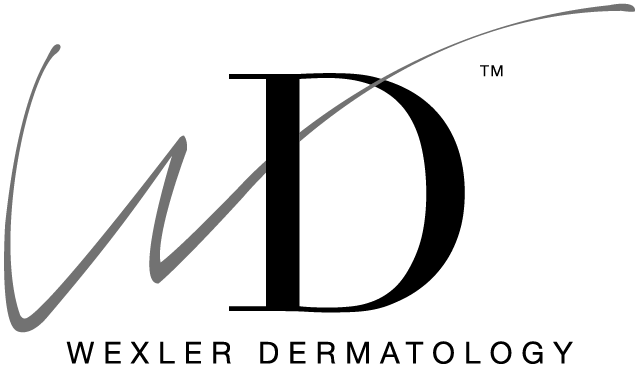Tone and Texture
The Science
Radiance. Evenness. Brilliance. We may not know the science behind tone and texture, but we know it when we see it. At first, when we’re younger, we struggle with acne or eczema. As we age, texture may still be a problem, but it is joined by issues of discoloration and dullness—issues of skin tone. Skin becomes rough, lackluster, lax, uneven in pigmentation and brightness. The result of uneven skin tone is skin that looks older and less healthy than it may actually be.
Our Approach
One of our first steps in improving tone starts with prevention. “Once your skin experiences pigmentation, you’ll always have a tendency for it to occur, especially with things like melasma,” says Dr. Patricia Wexler.
From personalized sunscreen recommendations to lifestyle guidance, we counsel our patients on what they need to know to keep pigmentation at a minimum.
To improve both tone and texture, there are several different procedures we offer depending on our patient’s skin color and degree of damage. To return photodamaged skin to a place of brightness and radiance, we use a combination of product recommendations and topical prescription treatments. “We can address [lackluster complexions] with topical products such as retinol, hydroquinone, vitamin-C serums, and peptides,” Dr. Wexler says.
Exfoliation and microdermabrasion are other excellent methods we use to improve both tone and texture, as they remove dead skin while promoting collagen production.
For those with more severe cases of tone and texture difficulties (melasma, sun spots, port-wine stains, broken blood vessels) the best options we have are more invasive: “In-office procedures include intense pulse light therapy or Fraxel® DUAL laser, microdermabrasion, DermaSweep and acid peels. All of these therapies could include the use of infusion therapy with bleaching agents,” recommends Dr. Wexler.
What We Offer
- Personalized Skincare Regimen
- Topical Prescription Treatments
- Microdermabrasion
- CooLifting
- DermaSweep
- IPL
- VariLite™
- YAG
- Isolaz®
- CoolTouch 3 Plus™
- Candela® Vbeam
- Chemical Peels
- Fraxel DUAL
Read More About Tone and Texture
Dr Wexler featured on The Coveteur article: How To Keep Your Skin Healthy This Winter
How To Keep Your Skin Healthy This Winter
Dr Wexler, Dr Fusco and Dr Howe Quotes featured on Purewow.com article: 11 Dermatologist-Recommended Skin Care Products (That Aren’t Sunscreen)
11 Dermatologist-Recommended Skin Care Products (That Aren‘t Sunscreen)
Dr Wexler featured on MyLittleBird.com article: Buffing Up Dull Skin
Buffing Up Dull Skin
Dr Gene featured on NewYorkTimes.com article: Everyone Is Crazy for Glass Skin. Here’s How to Get the Look.
Everyone Is Crazy for Glass Skin. Here’s How to Get the Look.
Dr Patricia featured on NYMag.com/The Strategist article: Do Beauty Pillows and Pillowcases Actually Work?
Do Beauty Pillows and Pillowcases Actually Work?
Dr Patricia featured on InStyle.com article: This is What Happens When You Damage Your Skin Barrier
This is What Happens When You Damage Your Skin Barrier
Dr Patricia featured on IntoTheGloss article: Your SPF Questions, Answered
Your SPF Questions, Answered
Dr Patricia featured on TeenVogue.com article: Why Parabens Could Be Bad for You
Why Parabens Could Be Bad for You
Dr Patricia featured on Oprah.com article: 16 Surprising Things Dermatologists Do to Their Skin
16 Surprising Things Dermatologists Do to Their Skin
Dr Patricia featured on Wmag.com article: Too Much of a Good Thing?
Too Much of a Good Thing?
Dr Patricia featured on TeenVogue.com article: The Difference Between Dandruff and Seborrheic Dermatitis
The Difference Between Dandruff and Seborrheic Dermatitis
Dr Patricia featured on MarieClaire.com article: The Pros and Cons of “Dermarolling,” AKA Stabbing Your Skin Thousands of Times with Needles to Make It Prettier
The Pros and Cons of “Dermarolling,” AKA Stabbing Your Skin Thousands of Times with Needles to Make It Prettier
Dr Patricia featured on InStyle.com article: The Beauty Product Fix to Your Worst Undereye Problems
The Beauty Product Fix to Your Worst Undereye Problems
Dr Patricia featured on Coveteur.com article: This is The Ultimate Way To Lighten Dark Spots
This is The Ultimate Way To Lighten Dark Spots
Dr Patricia featured on HarpersBazaar.com article: 10 Quick-Fix Anti-Aging Procedures for the Bride-To-Be
10 Quick-Fix Anti-Aging Procedures for the Bride-To-Be
Meet Our Experts




